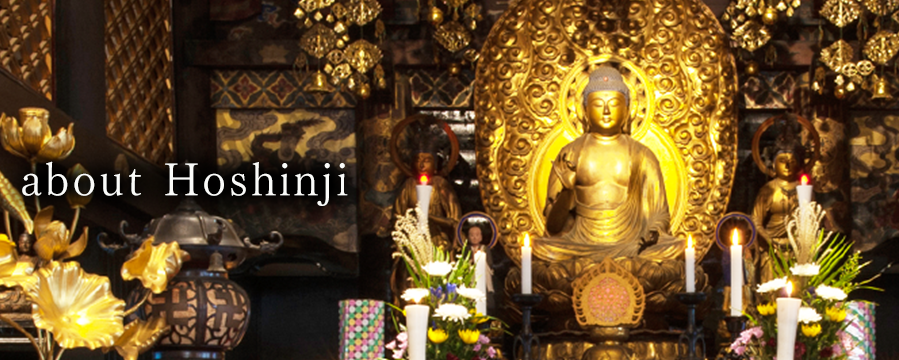こちらは檀家様の専用ページとなっております。ID /PASSを入力してログインしてください。
Hoshinji is a Jodo-shu (Pure Land sect) temple located in Tokyo directly across from the Akamon (Red Gate) of The University of Tokyo. The date of establishment as a temple is unclear but Hoshinji was first registered with the mother temple Zojoji in 1596.
The main Amida Buddha is said to have been the work of Eshin Souzu and was brought to Hoshinji in the early 1700's.
To the right of Amida is Enma, Judge of the Afterlife. Although the artist is unknown, the late Edo carving is highly valued and is designated number 10 in the Enma Pilgrimage of Edo.
Outside, to the left of the Hondo (worship hall), is a large stone Koyasu Jizo (Guardian Boddhisatva of Childbirth and Children) said to have been carved by Kukai (Kobo Daishi) in the 9th century. You may light candles and incense there.
There is also a large bronze Kannon Buddha which was commissioned in 1708. You can still see the names of those who donated money carved around the lotus on which the Kannon is seated.
The original Hondo was partially rebuilt in 1839 after damage from a fire. In 2015, in order to bring it up to current earthquake safety standards, the Hondo was further renovated, adding benches, elevating the Naijin (inner sanctum), repainting the floral squares of the ceiling depicting the Pure Land, and finally adding new kawara tiles to the roof.
The author Higuchi Ichiyo, featured on the ¥5000 bill, lived next to Hoshinji from the age of 4 to 9 years old. She wrote fondly of her happy childhood in her diary. The image of cherry blossoms falling softly on the Kannon is found in the novella "The Thirteenth Night" (Jusanya), and the charming character of Shinyo, the temple acolyte, is principle to the story of "Child's Play" (Takekurabe). An event commemorating Ichiyo's life (Ichiyo-ki) is held at Hoshinji every year on November 23, the day of her death at the tender age of 24 years old.
Two bronze statues have been added in 2015. One, to the right of the Kannon sama, depicts Ichiyo as a child when she was known as Natsu. The other, seated under the cherry tree, is a young girl of the Taisho era who strolled the upper-class neighborhood of Hongo in the Meiji and Taisho eras.










